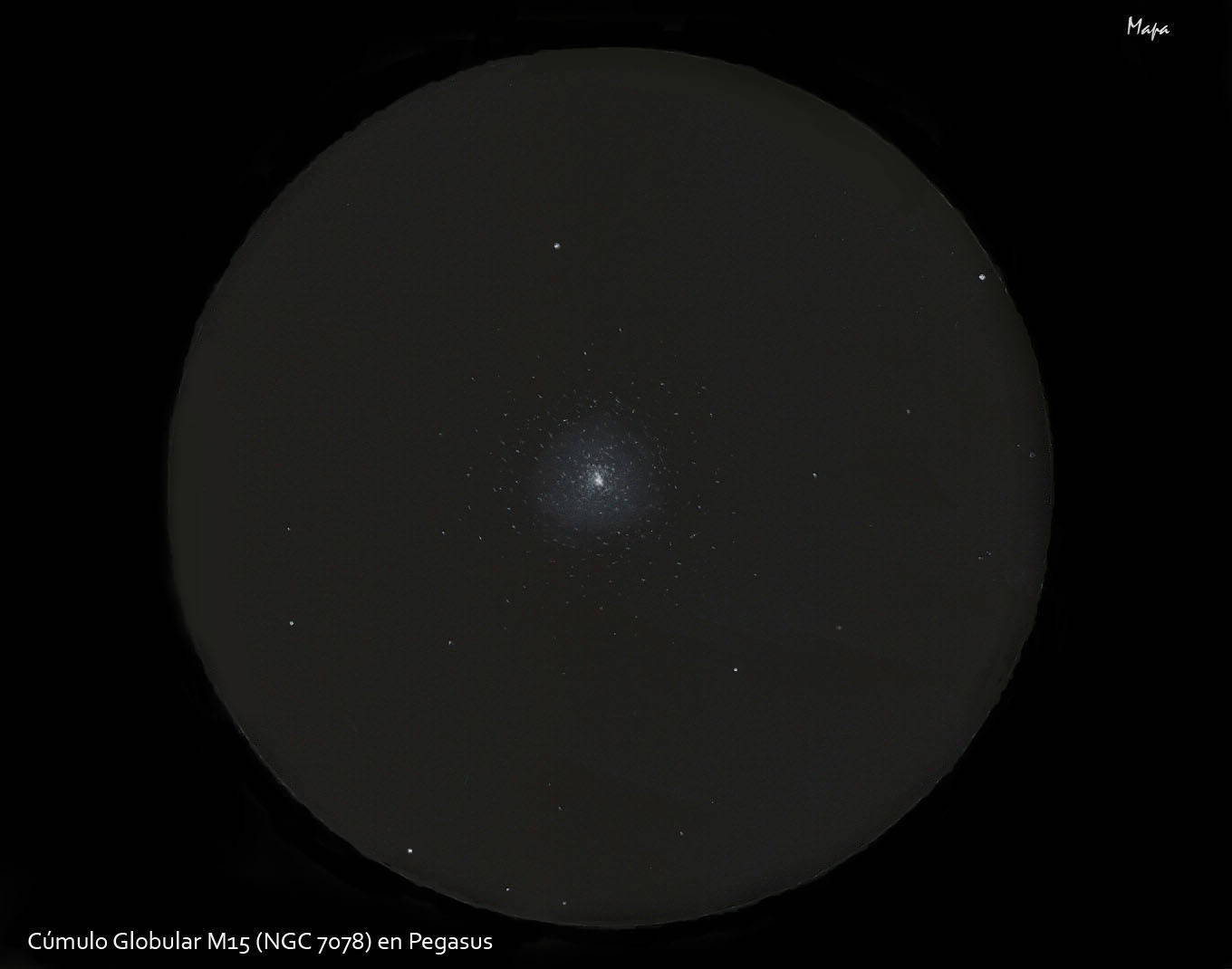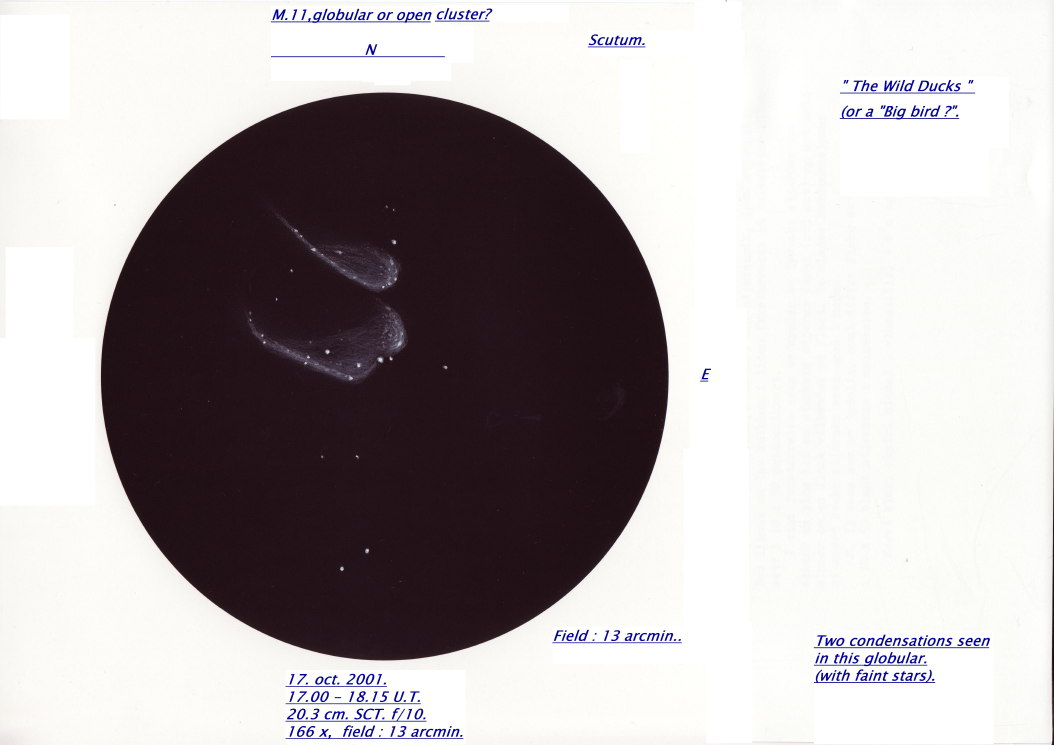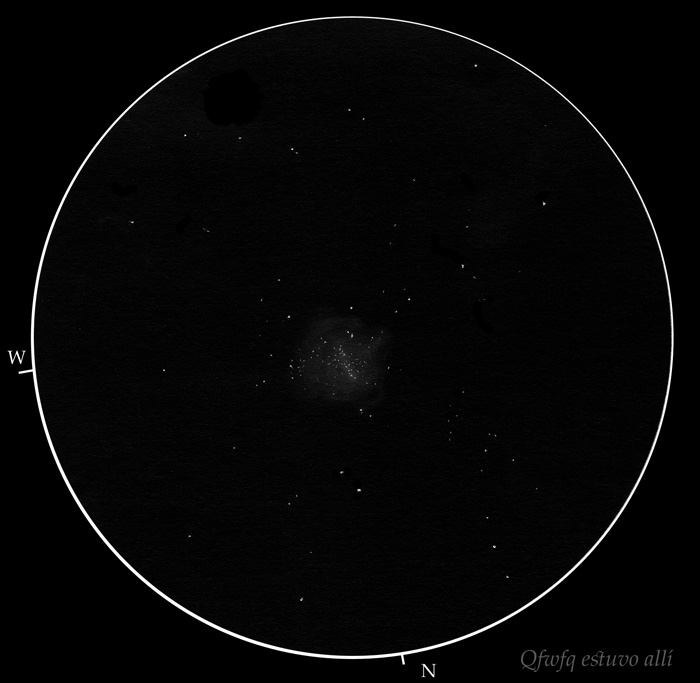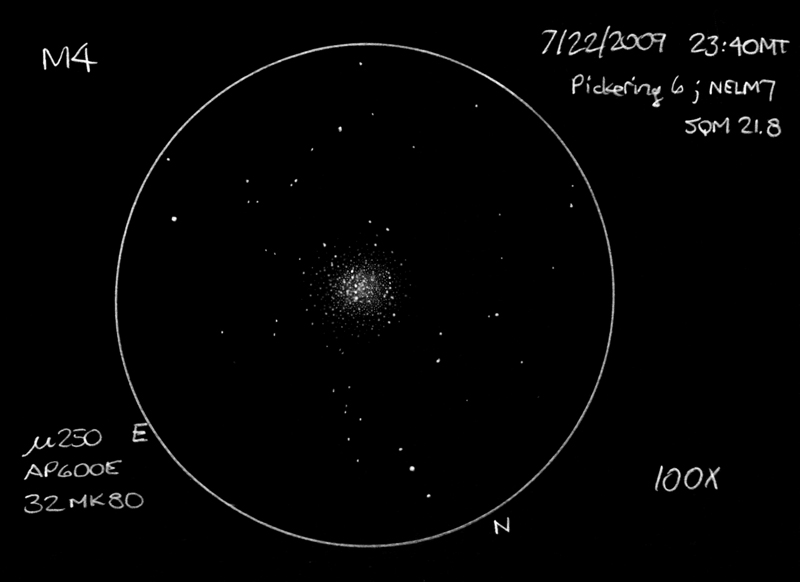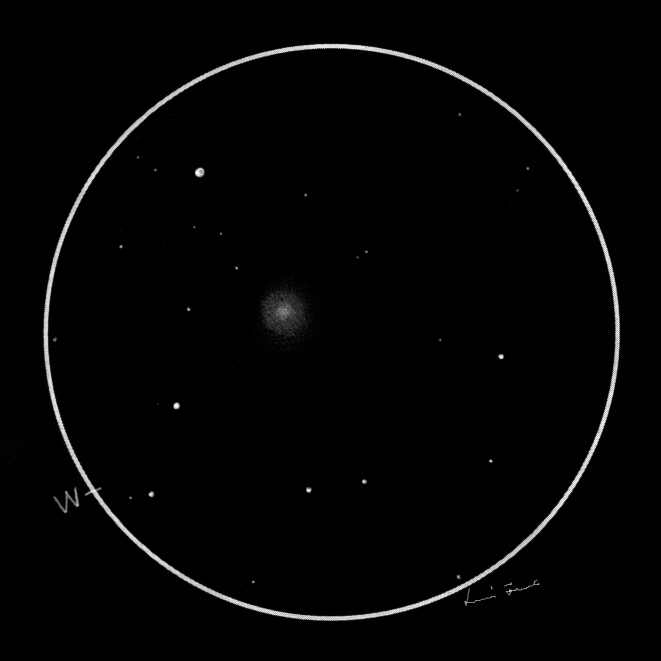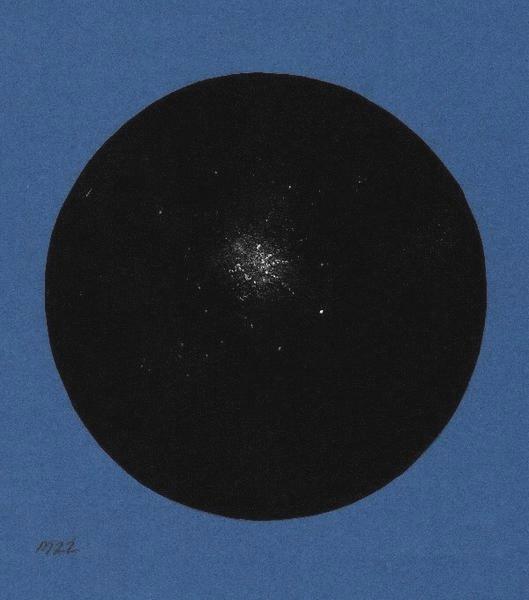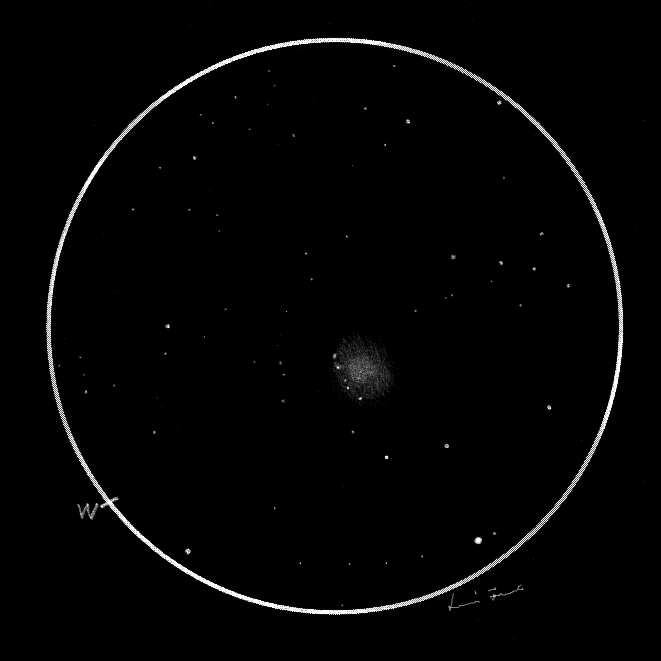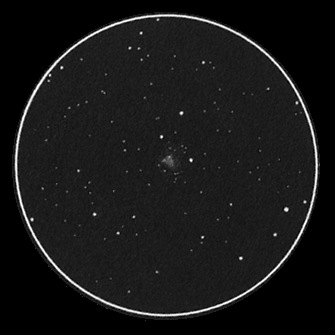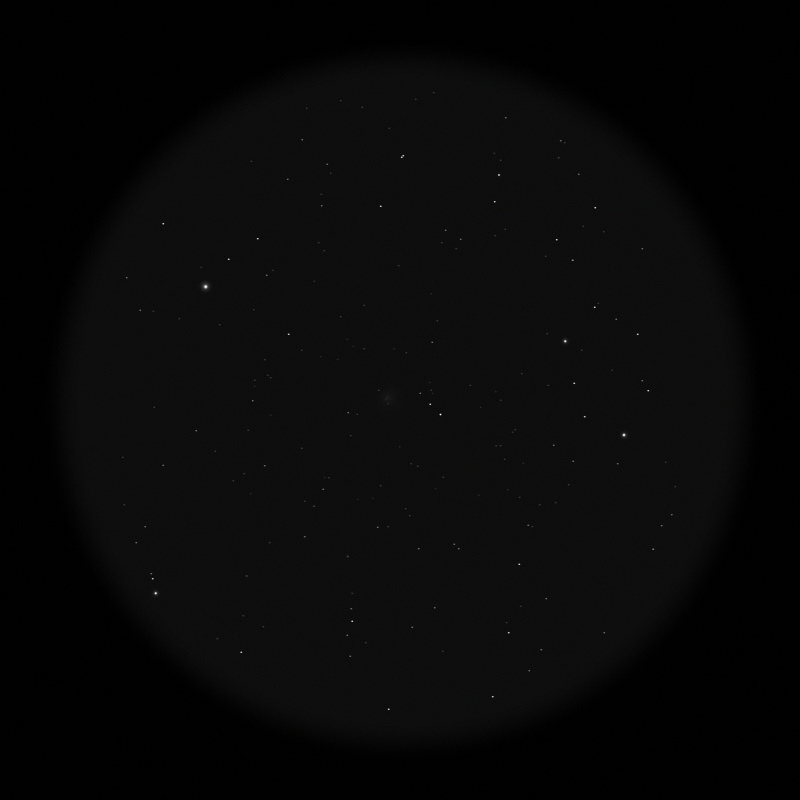
The Constellation Sagitta and M71 (NGC 6838)
Sketch and Details by Rony De Laet
Sagitta is a small but fascinating constellation. It fits completely in a common pair of binoculars. A fine bonus is offered by the presence of the loose globular, M71. This globular is visible as a hazy spot between Gamma and Delta Sagittae. The object is flanked by two mag 11 stars, one NW of the cluster and one S of the cluster. My 15×70’s shows both Gamma and Delta in one field of view. The whole field gives a great sense of depth. Gamma Sagittae (near the left edge of the sketch) is relatively nearby with a distance of 260 l-y. Delta Sagittae’s distance is about 460 l-y. M71 on the other hand is 13.000 l-y away, hovering at the edge of the galactic plane. From our line of sight towards M71, we probably have to look through a large portion of the dust and gas clouds of the galactic plane. It occurs to me that a lot of M71’s light might be blocked by interstellar absorption.
My choice of binoculars was the 15×70 (compared to my 8×56) to conquer the sky glow of our midsummer nights.
Site : Bekkevoort, Belgium ( 51° N )
Date : June 16, 2009
Time : around 23.30UT
Binoculars : TS 15×70 Marine
FOV: 4.4°
Filter : none
Mount : Manfrotto tripod and head
Seeing : 3/5
Transp. : 2.5/5
Sky brightness : 19.49 magnitudes per square arc second near zenith (SQM reading).
Nelm: 5.3
Sketch Orientation: N up, W right.
Digital sketch made with Corel Paint Shop Pro X2, based on a raw pencil sketch.
(Note: if the sketch does look too dark on your monitor, try to darken the room.)
[click twice on image to see full size sketch]
